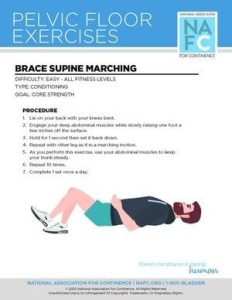Breaking down common myths about women’s fitness

In the world of fitness, myths and misconceptions often prevail, especially when it comes to women’s fitness. These myths can mislead and discourage women from fully enjoying the benefits of regular exercise. This article aims to debunk some of the most common myths about women’s fitness, empowering women to make informed decisions for their health and well-being.
Myth 1: Lifting weights will make women bulky
One of the most persistent myths is that lifting weights will make women bulky and overly muscular. However, the truth is that women lack the necessary hormones, such as testosterone, to develop bulky muscles like men. Weightlifting, in fact, offers numerous benefits to women, including improved strength, increased bone density, and enhanced metabolism, leading to a toned and sculpted physique.
Myth 2: Women should focus solely on cardio exercises
Many women believe that cardio exercises are the only way to achieve their fitness goals. While cardio exercises are undoubtedly important for cardiovascular health, solely focusing on cardio can neglect other essential aspects of fitness. Incorporating resistance training, such as weightlifting or bodyweight exercises, not only helps build strength but also improves posture, promotes better balance, and enhances overall body composition.
Myth 3: Women should avoid high-intensity workouts
There is a common misconception that high-intensity workouts are too intense or risky for women. However, high-intensity interval training (HIIT) can be highly beneficial for women of all fitness levels. HIIT workouts involve short bursts of intense exercise followed by brief recovery periods. Not only does HIIT burn calories effectively, but it also improves cardiovascular fitness, boosts metabolism, and saves time by being more time-efficient than longer, steady-state exercises.
Myth 4: Spot reduction is possible
Many women desire to lose fat from specific areas, such as their stomach or thighs, and believe that performing exercises targeting those areas will reduce fat in those particular spots. Unfortunately, spot reduction is a myth. Fat loss occurs throughout the body, and targeted exercises alone cannot selectively burn fat in specific areas. A comprehensive workout routine that combines both cardio and resistance training with a healthy diet is necessary to reduce overall body fat.
Myth 5: Women should avoid lifting heavy weights during pregnancy
During pregnancy, women often worry that lifting heavy weights may harm their baby. While it is crucial to consult with a healthcare professional before starting or continuing any exercise routine during pregnancy, moderate weightlifting is generally considered safe and beneficial. Strengthening muscles can help support the additional weight of pregnancy, reduce discomfort, maintain muscle tone, and aid in postpartum recovery.
Conclusion
By debunking these common myths about women’s fitness, it is evident that women should not limit themselves due to misconceptions. Embracing weightlifting, incorporating various types of exercises, including high-intensity workouts, implementing well-rounded fitness routines, and seeking guidance during pregnancy, are all important steps towards achieving optimal health and fitness. Remember, women are capable of achieving incredible results when empowered with the right knowledge and approach to their fitness journey.






